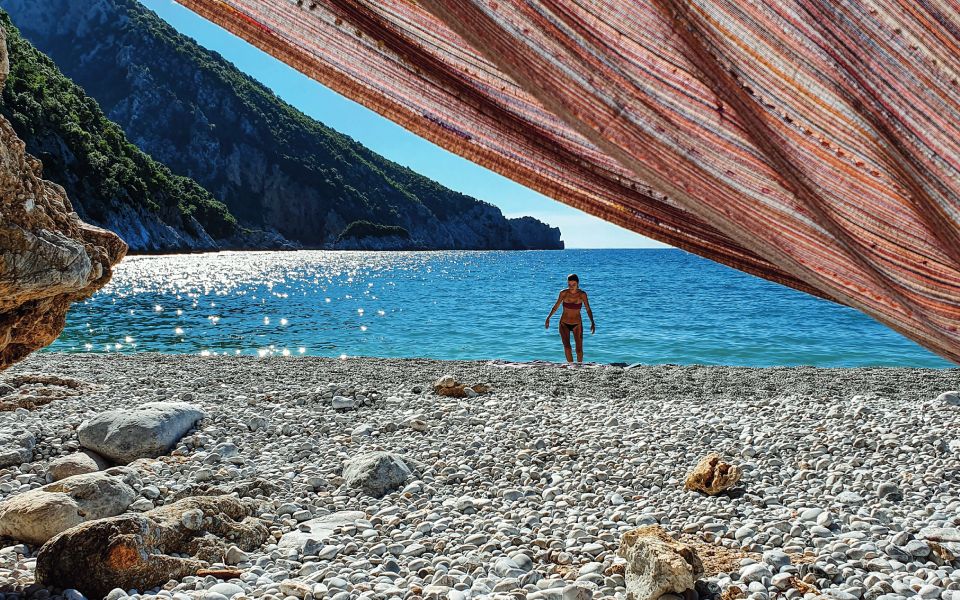Evia is very popular this year. Ever since the weather warmed up (and travel was allowed once again), the phone hasn’t stopped ringing. I’m considered a “local,” as I happen to have a summer house there, and have been visiting the island since I was a child. Every day – every single day – some friend, colleague or relative will call for advice about visiting Evia. One asked for sandy beaches protected from the winds; I sent him to the South Evian Gulf, which is dotted with sheltered coastal spots. Another requested an isolated beach, so I sent her to experience her exile on stunning Arhampoli Beach in Cavo D’Oro, only accessible via a two-hour trek. Relatives asked for a quiet town, with guesthouses, tavernas and promenades for leisurely walks: Karystos, Marmari and Edipsos are their primary choices.
My hiker friends wanted to combine time on the shore with some mountain action: the climbing sectors in Kymi and the Agali, Nileas and Dimosari gorges are just some possible recommendations, and they’re all close to the sea. I also told them about the trails leading to Dirfys and Xerovouni (the summits of the mountain range in Central Evia), and about the Drimona Waterfalls deep in the forest where you can swim in mountain pools. There are so many contrasts and contradictions; these are only some of them. Still, word appears to be getting out. This year in particular, when time, money and travel are all being valued differently, Evia – the second largest Greek island, easily accessible by car via the Halkis Suspension Bridge – looks to be having its moment.
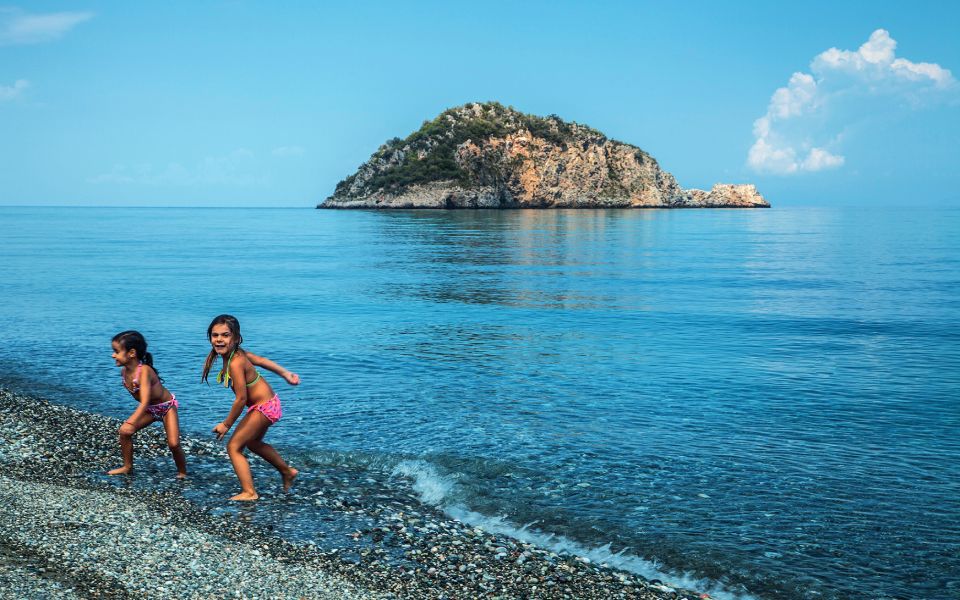
© Olga Charami
Northern Evia is verdant. The south is relatively barren but not less beautiful. Mountains rise up, slopes covered with forests and crossed by streams. To the east and west, amazing beaches face the Aegean and Euboic seas respectively, each one very different from the other. Summer houses dot the shore, interrupted by stretches claimed by campers who’ve pitched their tents on the sand. There are Frankish towers at Alonari, castles such as the Castello Rosso in Karystos, ancient citadels in Eretria, and wetlands such as Dystos in Aliveri, and you reach them on roads that cut through pristine forests, or climb high above the sea, hugging the edges of towering cliffs.
You can experience it all in Evia. I’ve stood and watched the “crazy waters” of the Evripos Straits from the bridge in Halkida. I’ve nibbled on innovative culinary creations and sipped fine wines at Ginger All Day on pedestrianized Ermou Street. I’ve downed ouzo while eating fresh seafood by the sea at Deka Vimata stin Ammo in Artaki and at Kapetanios by Lampsakos Beach. I’ve ambled through Kymi, admiring the beautiful old captain’s houses. I’ve swum the waters of the endless Mourteri Beach, keeping one eye out for the ferry to Skyros.
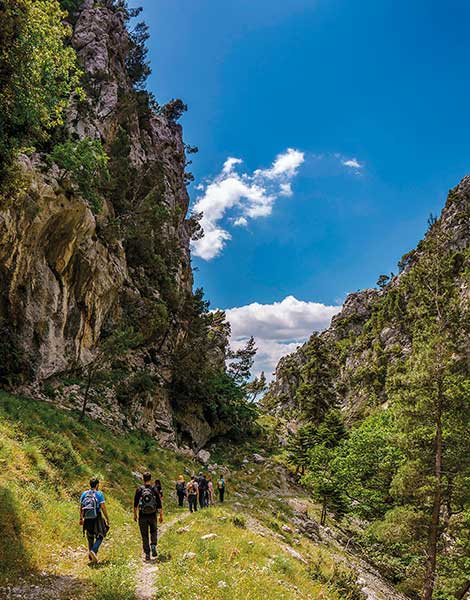
© Shutterstock
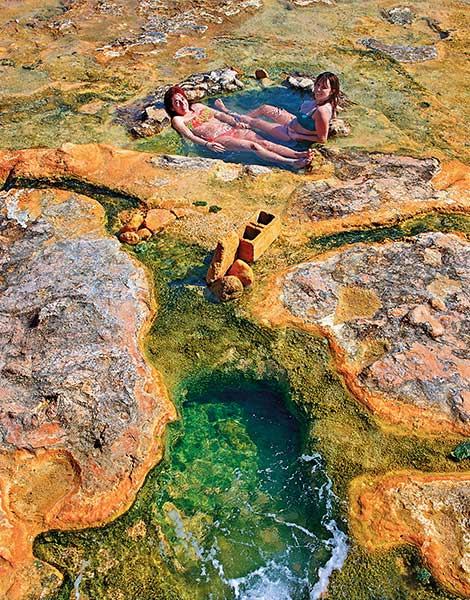
© Visualhellas.gr
I’ve climbed the slopes of Mt Dirfys, out of breath, motivated by the thought that the finest chops were waiting for me at Kissos taverna in Steni, followed by dessert and coffee at Tsayius and a wide range of mushrooms for sale at Manitaropoleio in the village of Katheni. One year, on August 15th, when the Feast of the Assumption is celebrated, I was swimming alone at Kokkinia Beach and saw dolphins in the open waters, while another year at Limnionas Beach, on the same day, I couldn’t find a spot to put my towel down for the crowds there, whereas Almirihi Beach had the balance between too few and too many swimmers just right. At Klimaki Restaurant in Agios, I indulged in the local pasta with seared myzithra (a white cheese); at Zaharakis in the same village, I had the finest beef steak; and then there were the traditional tyropitaria (cheese pies) and tiganopsoma (fried bread), wherever I could find them.
I’ve climbed down Dimosari Gorge in the south of the island just to take a refreshing dip at Kallianos Beach; I’ve pitched my tent on nearby Aghios Dimitrios Beach and sought refuge from the midday heat at the small taverna Stefosi in the village above the beach; I’ve enjoyed the best magirefta (traditional dishes usually cooked in an oven dish or a deep pot) at the Cavo D’Oro Restaurant in Karystos; I’ve walked through the barren landscape of Karystia and suddenly come across the lush village of Platanistos, where I dove into the crystalline waters of the river and let them carry me until I arrived at Potami Beach, with its picturesque taverna.
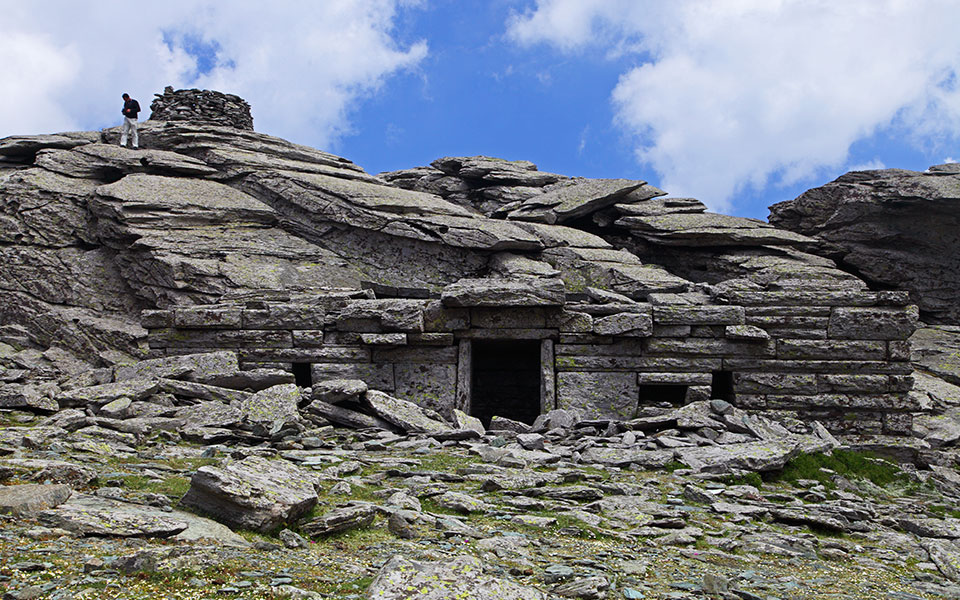
© Olga Charami
On the promontory known as Cavo D’Oro, the winds are savage. If you come here, you’ll happen across sparsely-populated villages such as Antia, where, to your astonishment, you’ll discover a rare whistling-based language scheduled to be recognized and protected by UNESCO as a monument of Intangible Cultural Heritage. Should you seek out the legendary Drakospita (“Dragon Houses”) of Styra and Mt Ohi, bizarre structures dating from antiquity, you’ll see at once why traditional folklore has associated them with those great legendary beasts.
Straight across the island in the north, on the beaches of Lihada, Gialtra, Gregolimano and magical Lihadonisia, the pine trees come down to the water’s edge. You can watch the seals in the deep waters of Cavos or drink ouzo at the port in Aghios Giorgios. At Loutra Edipsou, the spa town with thermal springs, you can enjoy beauty treatments in the pools of Thermai Sylla Spa. Hungry, or thirsty? There’s freshly grilled fish at the fish taverna Maravelis and exquisite cocktails at the new bar El Matador Bar in Oreoi.
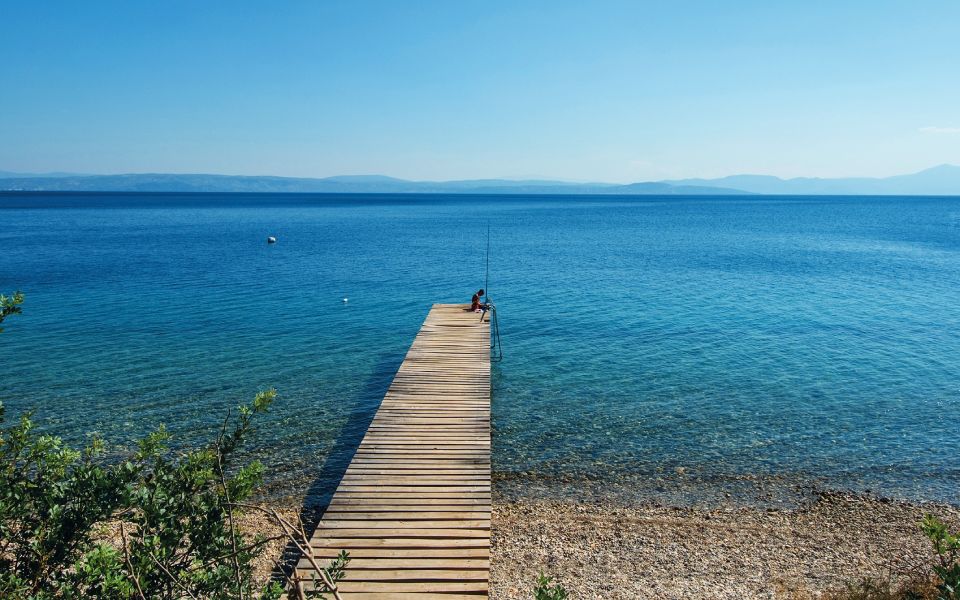
© Clairy Moustafellou
At the ever-popular Aghia Anna camping site, you’ll find everyone, while at Prokopi you might see scores of pilgrims walking (or even crawling) by to fulfill their vows to Aghios Ioannis Rossos (Saint John the Russian), all while you enjoy traditional Greek coffee and a slice of amazing portokalopita (syrupy orange cake) at the pastry shop Chrisavgi.
From south to north, at the beaches of Styra, Almiropotamos, Kalamos, Korasida, Limni, Rovies and Ilia, you’ll find calm waters, sandy beaches and the easy life that comes with the timeless triptych of a rented room, a favorite beach and a local taverna. Things are similar in Pefki, Ellinika and Psaropouli. As for the secret beaches and caves around Vlahia, Glyfada, Hiliadou and Kymi, don’t tell anyone – if too many people knew, the sunsets would never be the same.
Hiliadou ofers its visitors so many options, including diving off the rocks, canoe excursions to Hiliadonisi, hikes along the gorge, and delicious rustic meals at the restaurants Rinni and Bougazi. On moonless nights, I fish for calamari; on moonlit nights, I count the stars. When I finally do go to bed, I enjoy the most beautiful sleep; balcony doors wide open, I drift off to the sound of crickets chirping and waves gently lapping the shore. It’s difficult for me to remain impartial about the charms of this place, as it is here that I learnt what summer really means.

